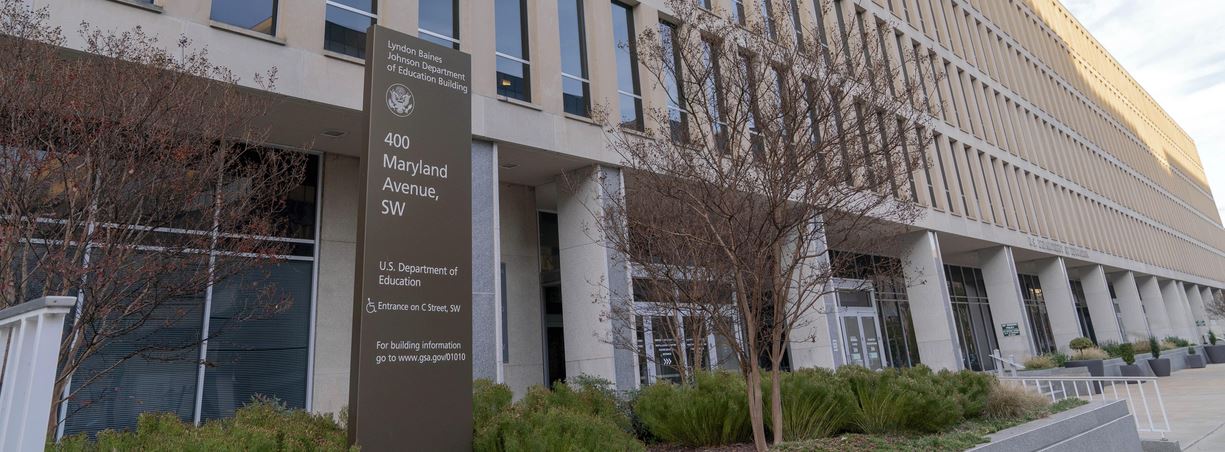
I taught Physics for 25 years at two nicer school districts and was an instructor for 15 years at an academic summer camp for genius children. There is objective evidence that I was an excellent teacher. Also, I can discuss education forever, so an effort will be made to keep this post limited to the federal Department of Education.
The budget for the federal Department of Education (DoED), is 268 billion dollars. There are 54 million students in k-12 schools. The DoED spends $5000 per student, but doesn’t have any students.
The DoED was established in 1980. The National Assessment of Educational Progress (NAEP) is a set of tests covering different grade levels and subjects, that establishes the status of k-12 education. The NAEP is administered by the DoED, and shows that k-12 has not improved in the 45 year lifetime of the DoED. No improvement after 45 years and $3,400,000,000.
Since President Trump has taken office, the DoED website is in transition, so Wikipedia will be the source for DoED policies and functions.
Let’s go through the DoED’s four key functions.
Establishing policies on federal financial aid for education and distributing as well as monitoring those funds.
The DoED gave $27 billion to k-12 schools for Title 1 (poor districts) and special ed. That is $500 per student. State governments provide the majority of assistance to poor districts and special ed students.
North Royalton spends about $14 k per student. Cleveland spends about $19 k per student.
Here is some rough math to figure out what it costs to a school for a general education student. At NoRo, a gen ed student has 6 classes. A gen ed teacher has 5 classes with 125 students. The average teacher salary at NoRo is $77 k. With benefits, call that $115 k. The teacher is earning $920 per student. The student has 6 teachers, so costs $5520 for teacher salary. Niche says that a third of the budget goes to support services. So a gen ed student costs $7400, or about half of the average cost per student. Special Ed students can be astoundingly expensive.
NoRo had a student with a hearing impairment. He had hearing aids and could communicate with his friends. The teacher wore a microphone linked to his hearing aids. His accommodation required him to have a language interpreter attend each class with him. On the low end, that student cost an additional $80 k. Parents demanded it and had the paperwork to back them up.
Schools have students with severe cognitive dysfunction. An Art teacher friend of mine taught a self-contained class for a while. One student was so impaired, that the most he could do is mash a button when a red fish swam by on the computer screen. These students are not in school to be educated, but to give their parents a break. A Master’s degree and a $90 k salary aren’t required to do this.
Immigration also increases the cost. The Parma City School District has so many Ukrainian students, they have two sections of Geometry just for English Language Learners.
Schools are well-funded, without accomplishing much.
At the university level, the DoED distributes $52 billion per year in grants and loans. Biden illegally paid off some loans, so those could be moved to the grant column. When I attended Ohio State, about the time the DoED was created, tuition and room and board cost $3000 per year. That would be about $12,000 in today’s dollars. Per the OSU website, a year now costs $28,000.
Why did Ohio State rise their price more than twice as much as inflation? Because they could. Potential students had loan and grant money, so they took it. Ohio State has many more non-faculty staff and all the buildings are new. All universities did the same thing.
Collecting data on America’s schools and disseminating research.
Since NAEP testing results don’t reflect well on their department, the tests may be legit. There isn’t any other data coming out of DoED that anyone wants. I have never met a teacher who uses research disseminated by the DoED. Educational research is notoriously flawed.
Focusing national attention on key issues in education, and makes recommendations for education reform.
That appears to be self-advocating and lobbying. Since there has been no improvement in education, they can’t be doing a good job or making valuable recommendations.
Prohibiting discrimination and ensuring equal access to education.
This key function seems fraught with peril. In our current DEI climate, this key function seems to be to use the courts to dilute educational quality.
To sum it up, the DoED has a budget of $238 billion and sends $27 billion to school districts. The amount sent to school districts is 11% of the budget, and isn’t effective anyway.
The bedrock belief amongst teachers, is that the DoED is there to make sure every student gets an education. Clearly that isn’t working. States care about their children, then the federal government. Close the DoED, and block grant money to the states, while insisting upon transparency.
I know more about what my Physics students need, than the principal does. The principal knows more than the superintendent, the superintendent knows more than the governor and the governor knows more than the president. As policy and funding decisions move farther away from the classroom teacher, the quality of those decisions decline.
That statement is not perfectly true, but it moves us in the right direction. Give each teacher a couple of grand for supplies and equipment, and maybe a third of it would be squandered. None of it would be spent on corrupting the system, and two-thirds would directly benefit instruction.